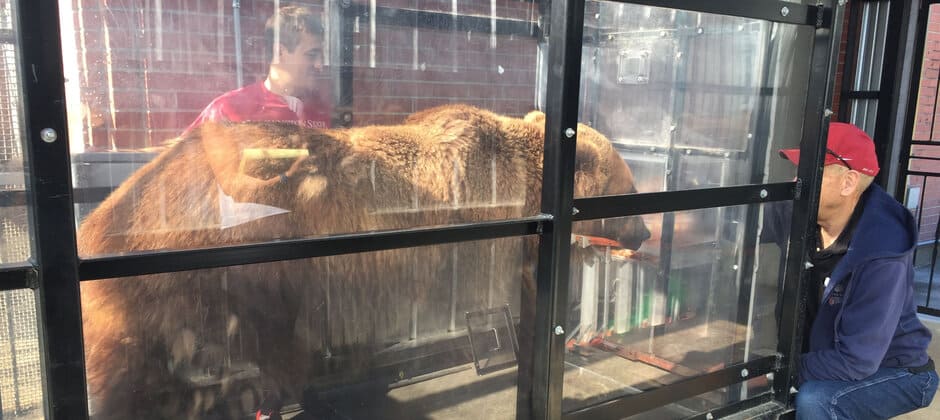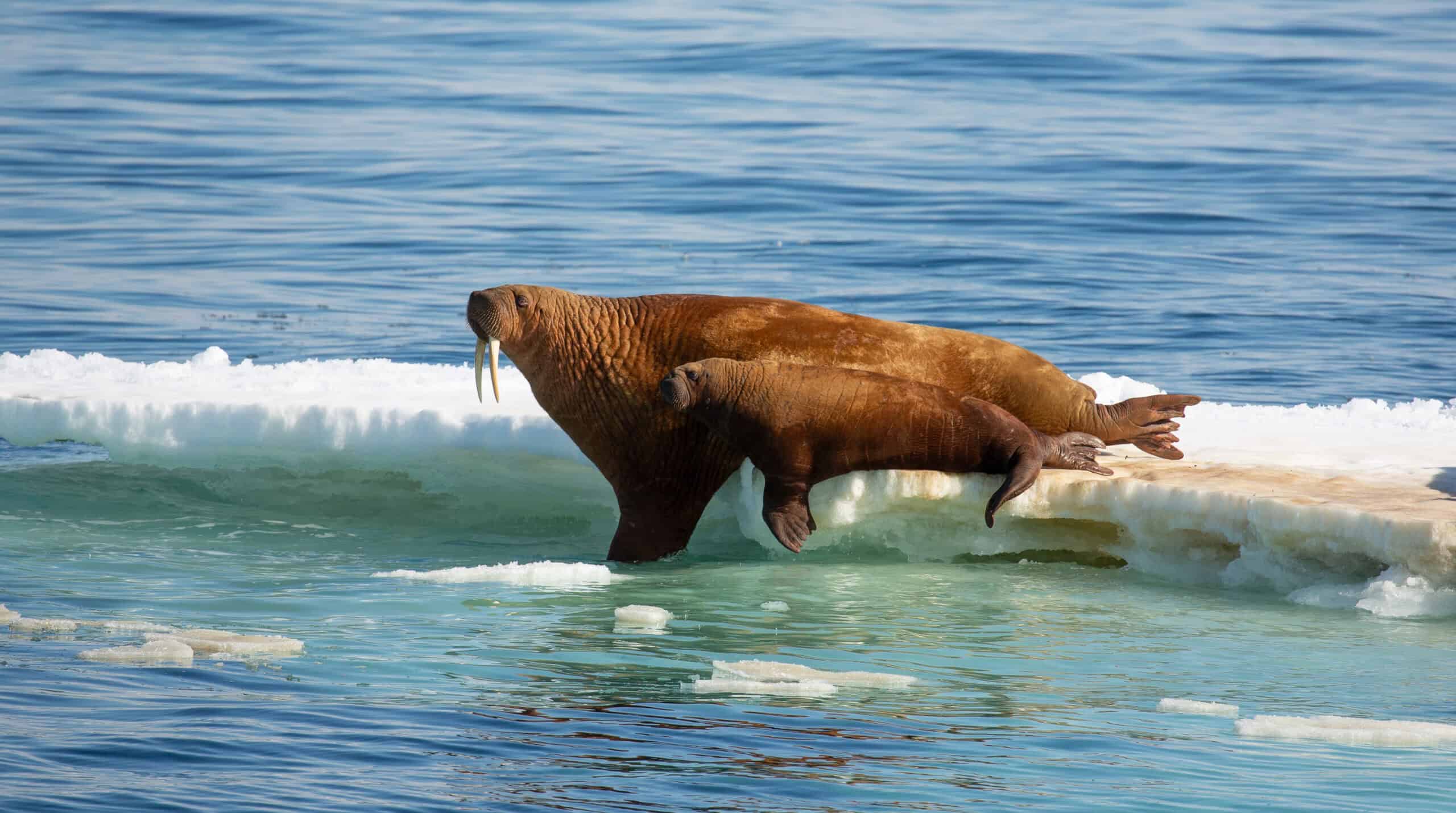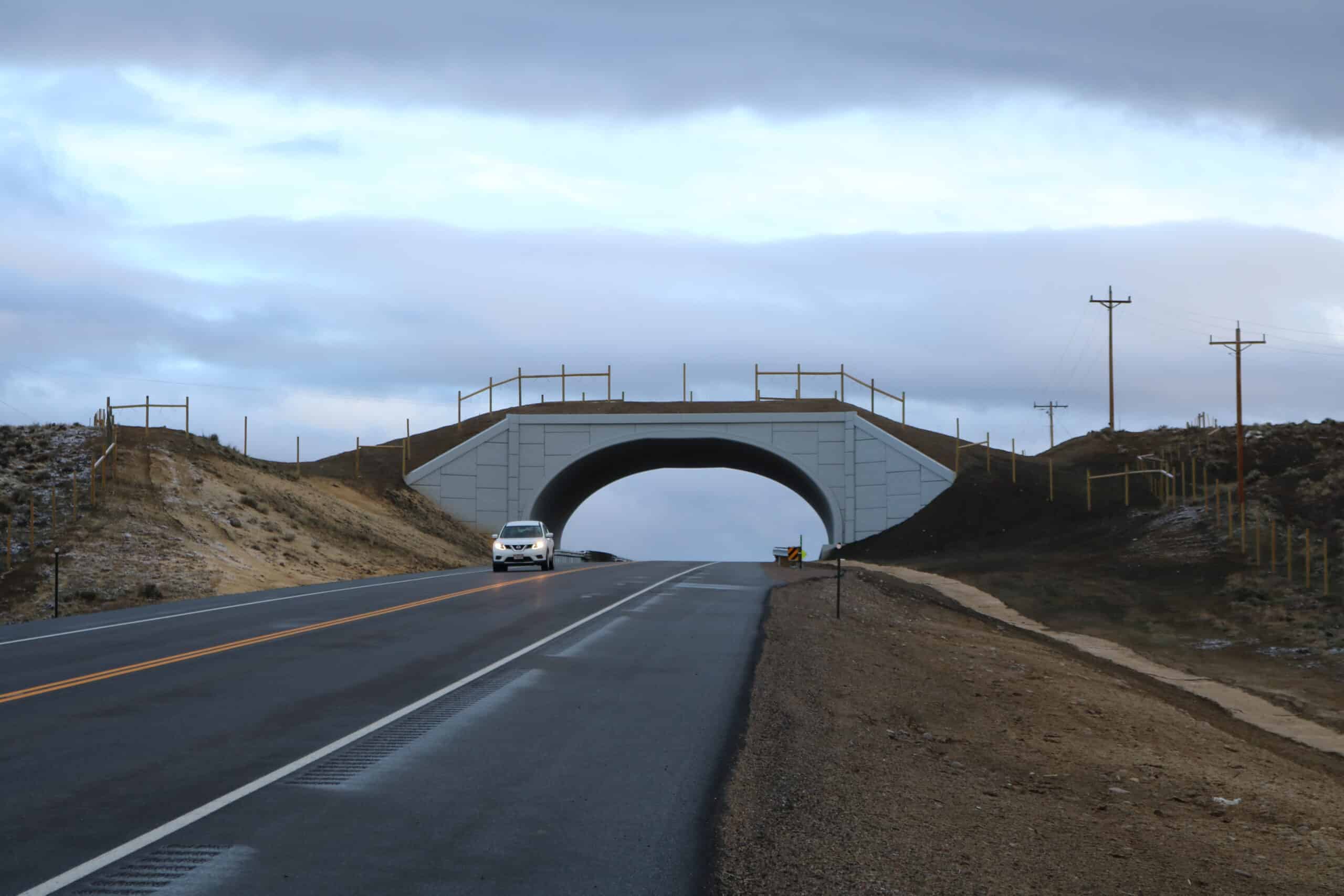Share this article
Grizzlies use the same Yellowstone trails as people
Grizzly bears in Yellowstone National Park prefer to save energy by traveling on flatter paths — the same places park visitors like to hike.
Researchers wanted to find out more about where grizzlies (Ursus arctos horribilis) prefer to travel before going into hibernation and how much energy they expend as they bulk up on calories to get through the winter. The findings could be helpful, they thought, especially as the bears enter historic home ranges throughout the Greater Yellowstone Area, causing potential conflict with humans.
They already knew of research showing different bear behaviors, like moving faster around roads. “We wanted to put a currency to that,” said TWS member Anthony Carnahan, a graduate student at Washington State University. “We wanted to actually address the costs that these bears incur for those different behaviors.”
Carnahan led a study published in the Journal of Experimental Biology where he and his colleagues conducted both lab and field experiments to find out more about grizzly energy expenditure. They conducted their research at the WSU Bear Research, Education and Conservation Center, the only facility of its kind with captive grizzly bears for lab research in the U.S.
For the lab experiments, the team used a treadmill originally designed for horses to measure oxygen expenditure at different speeds and inclines. Getting a grizzly onto a treadmill wasn’t easy. The team built a plexiglass enclosure around the exercise equipment, lined with steel so the bears wouldn’t break through. “They’re not malicious or anything, but if they want to go somewhere, they tend to be able to,” Carnahan said.
Training the bears to use the treadmill was also a challenge. His team fed the bears apple slices to coax them to start walking. “When we initially started up the treadmill, they couldn’t quite grasp why they were moving away from their food,” he said. “Eventually, we worked up to a speed where they actually had to move, and they figured it out. They’re very smart animals, but we were asking them to do something no other bears have been asked to do.”
The team measured the bears’ oxygen consumption on the treadmill to calculate how much energy they used at different slopes and speeds. They found that the bears used more energy both on inclines and at slower speeds on declines (although they used less energy at higher speeds on declines). They also found the bears didn’t seem to have enough aerobic capacity to go fast for long distances. The way they consume energy appeared to be similar to the energy humans use while climbing hills or mountains.
Carnahan and his colleagues then wanted to see how these findings compared to bears in the wild. Since the Interagency Grizzly Bear Study Team had been collaring and tracking the bears in Yellowstone since the 1970s, it could provide GPS data to Carnahan and his colleagues.
After analyzing 11 years of collar data, Carnahan’s team determined that bears in Yellowstone walk at an average speed of 0.6 meters per second — similar to humans — a slower clip than they expected. “We were pretty surprised initially, because we thought that being hibernators, they would be very energy conscious, and we expected them to use the most efficient speed,” Carnahan said. But after thinking about it, the team figured that because they need to scout out plants and berries and they don’t need to hide from predators, moving slowly made sense.
The data also revealed that, like humans, grizzlies tend to walk flatter paths to save energy. “The majority of the time, they were on fairly flat terrain, or at least were side-hilling,” he said, and they stayed along the same elevation throughout their treks.
The areas the grizzlies wandered also happened to be the same places the National Park Service builds trails, since they are easier for people to walk on. As a result, Carnahan said, trails are a logical place for people and grizzlies to come across one another.
“People should educate themselves on how to properly recreate in bear country,” he said. “We’re saying bears are using the same trails as people, but not by any means are we saying don’t go out and recreate.” (This video shows some examples of how to recreate safely when bears are nearby.)
Carnahan next plans to use accelerometers to more accurately determine how grizzlies burn energy. “With an accelerometer, we can actually get minute-to-minute energy expenditure,” he said.
Header Image: Researcher Charles Robbins, a professor at Washington State University, offers a food reward to a grizzly bear in order to coax it to walk on a plexiglass enclosed treadmill. Credit: Anthony Carnahan








